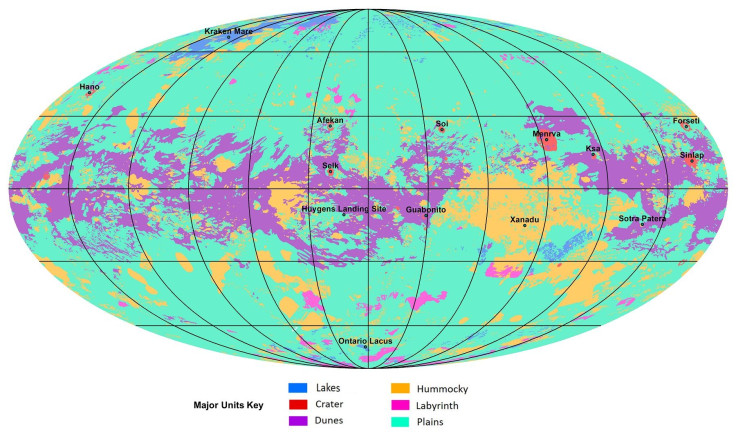First Global Geological Map Of Saturn's Moon Titan Reveals Earth-Like Surface Features

Apart from Earth, Saturn’s largest moon, Titan, is the only planetary body in our solar system known to have stable water on its surface. However, it has been difficult to get a better picture of the moon’s surface because of its thick and hazy atmosphere.
Now, researchers of a new study have completed a global map of Titan, revealing Earth-like geological features.
First Global Geological Map Of Titan
As a part of the Cassini missions from 2004 to 2017, Cassini’s radar imager penetrated through Titan’s methane and nitrogen atmosphere while its visible and infrared instruments captured some of the moon’s large geological features. Using this data, researchers were able to complete the first-ever global geological map of Titan, which is now published in the journal Nature Astronomy.
Looking at the color-coded map, one can see the different geological features of Titan, including plains, hummocky, dunes, labyrinth, craters, and even lakes. The black lines mark 30 degrees of latitude and longitude, and the marks on the map label some of Titan’s names surface features including the landing site of the European Space Agency’s Huygens Probe.
On the first look, the map looks rather like a slightly different map of the Earth, but instead of water, Titan actually has methane and ethane raining down on its seas. This is because on Titan, methane, and ethane, which are gases here on Earth, behave like liquids due to the frigid temperatures.
Early Days Of Earth
“Titan has an active methane-based hydrologic cycle that has shaped a complex geologic landscape, making its surface one of most geologically diverse in the solar system,” lead author Rosaly Lopes of NASA's Jet Propulsion Laboratory said. “Despite the different materials, temperatures and gravity fields between Earth and Titan, many surface features are similar between the two worlds and can be interpreted as being products of the same geologic processes."
According to scientists, having a better look at Titan gives a better idea of how the Earth looked like in its early days because just like Earth, Titan has a liquid cycle and holds the building blocks of life. Now, we can see that its surface is not too different from that of Earth's either.
© Copyright IBTimes 2025. All rights reserved.






















